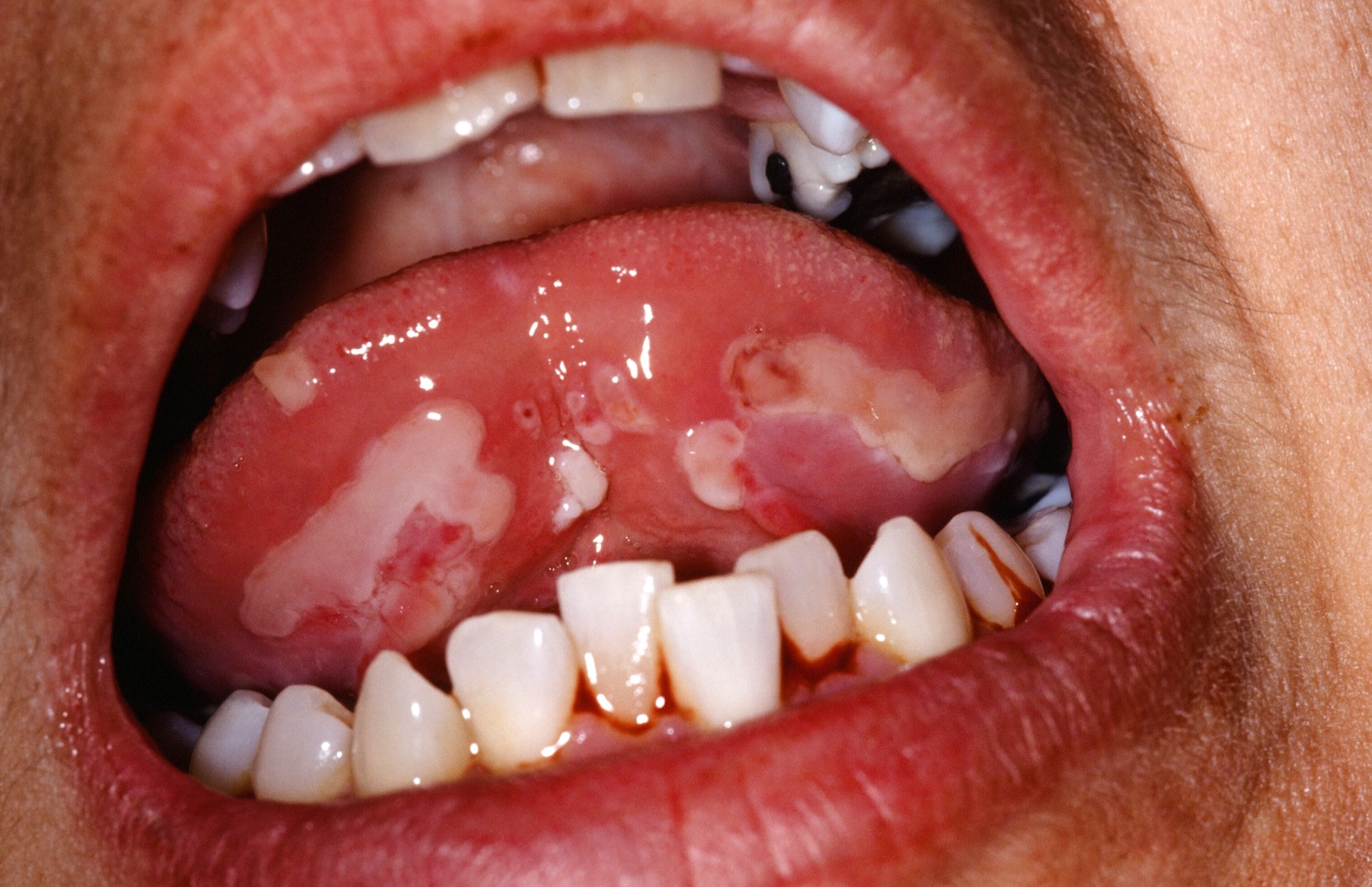
Oral lesions are the first manifestation of pemphigus vulgaris in 50%–90% of the cases.

Oral lesions are the first manifestation of pemphigus vulgaris in 50%–90% of the cases.
Pemphigus vulgaris (PV) is an autoimmune blistering disorder caused by circulating antibodies to epidermal adhesion molecules, primarily desmoglein 3.
Widespread, flaccid bulla and crusted erosions in a middle-aged patient is classic. Oral erosions are characteristic and the patient may present with only oral ulcerations. The esophagus may be involved and sloughing of its entire surface has been reported. Nikolsky sign is positive. Untreated PV has a high mortality. With treatment, current mortality averages about 6%. Rarely, nail dystrophy or paronychia may occur. There is an increased susceptibility to the development of autoimmune diseases in the family members of patients with PV. Nikolsky's sign is positive: splitting of the epidermal of normal skin with shear force.
Genital involvement is not uncommon. In one study of 34 women with PV, vulvar involvement was observed in 44.1% and was significantly associated with nasal mucosa involvement.
DIF shows intercellular IgG and/or C3. IIF is usually positive (looking for antibodies to desmoglien 1 and/or 3) and its titer may correlate with disease activity.

PV can have blisters but they tend to be fragile and break open quickly leaving shallow ulcers or erosions. Bullous pemphigoid in contrast presents with stronger or “tense” blisters that don't so easily break.

Scalp involvement is observed in up to 60% of people with pemphigus and in some cases, the scalp may be the first location affected.
Homepage | Who is Dr. White? | Privacy Policy | FAQs | Use of Images | Contact Dr. White